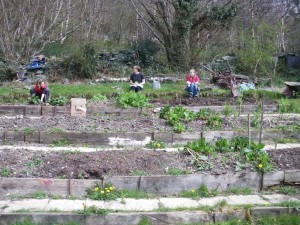The church of Saint Edmund is interesting just because of its location. Rather than being in the village of Caistor St Edmund, Norfolk, it’s a few hundred yards away inside the remains of the Roman town of Venta Icenorum.
Above ground, this is an otherwise unoccupied field surrrounded by grassed embankments; below ground is a different matter. The church seems to align with the Roman street pattern and it’s possible that the location of the current church preserves a site used for worship since the early days of Christianity.
The nave, the oldest part of the present building, was built somewhere around 1050 and remarkably includes Roman roof tiles, robbed from the remains of the town, in its construction. The picture shows flint in the wall of the 14th century tower; roof tile on the corner of the 11th century nave; and breeze block on the 21st century annex that, by the look of the sink visible through the window, is a kitchen.
Coffee mornings are such an important part of modern Christianity that it’s common to see parts of ancient churches converted to be kitchens. In this case, the 21st century annex replaces, or at least encases, some of the buttresses on the nave and chancel, much to the detriment of the appearance of the rear of the building. I’m surprised they were allowed to do it.

 The “Urban Homestead” is a phrase that goes back to the 1970s and has become a common phrase in the US for describing a home which is aiming for self sufficiency and self reliance. It has a lot in common with the Permaculture and Transition movements, at the very least sharing some goals and techniques.
The “Urban Homestead” is a phrase that goes back to the 1970s and has become a common phrase in the US for describing a home which is aiming for self sufficiency and self reliance. It has a lot in common with the Permaculture and Transition movements, at the very least sharing some goals and techniques.